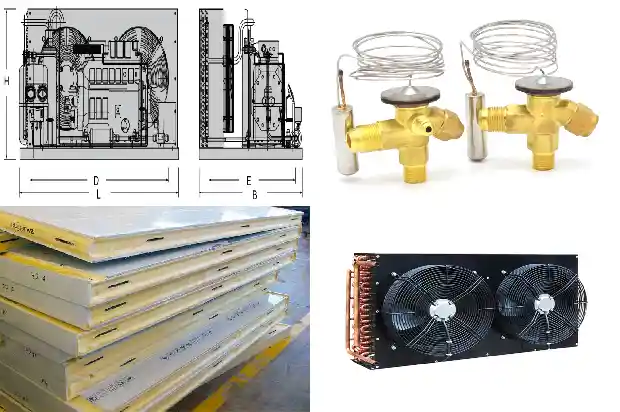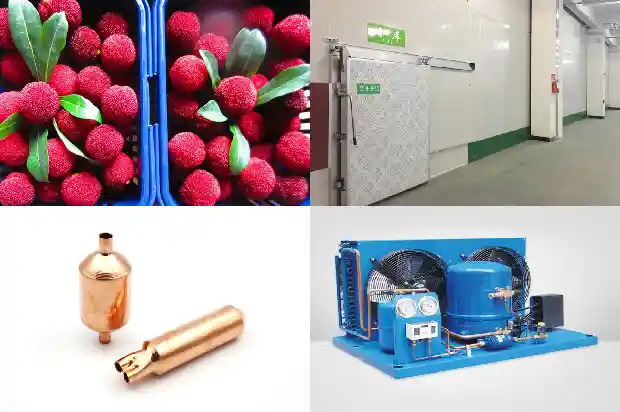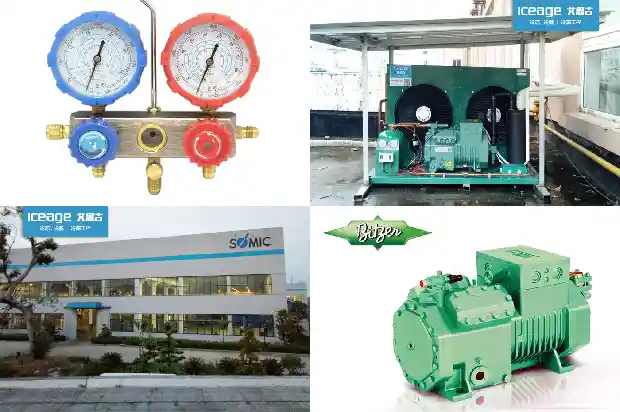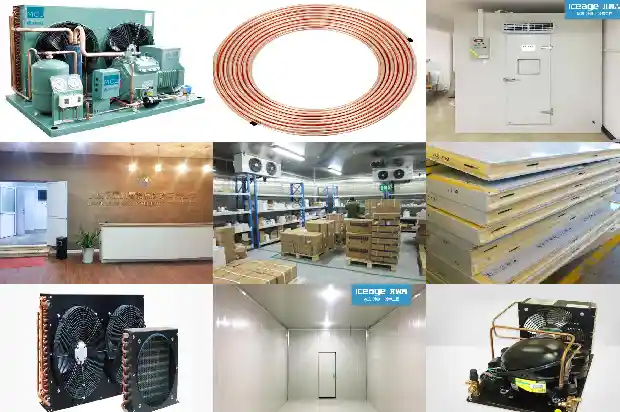The Structure and Components of Centrifugal Compressors
2024-09-10
According to different ways of compressing gas, compressors are usually divided into two categories: positive displacement compressors are suitable for occasions with small and medium flow rates; turbo compressors are suitable for occasions with large flow rates. From the energy perspective: a compressor is a kind of machinery that converts the mechanical energy of the prime mover into gas energy. The increase in gas pressure in a positive displacement compressor is achieved by reducing the volume of the gas; the increase in gas pressure in a turbo compressor is achieved by the interaction between the impeller and the gas.
Structure and Components
Main shaft: All rotating parts are installed on the main shaft.
Impeller: The impeller is also called the working wheel, which is the most important component in the compressor. Under the action of the impeller blades, the gas rotates at a high speed along with the impeller. Due to the action of the centrifugal force of rotation and the diffuser flow in the impeller, the pressure of the gas after passing through the impeller is increased. In addition, the velocity energy of the gas is also increased in the impeller. Therefore, it can be considered that the impeller is the only way to increase the energy of the gas.
Spacer sleeve: The spacer sleeve is hot-mounted on the shaft. They fix the impeller at an appropriate position and can protect the part of the shaft without the impeller installed, preventing the shaft from contacting the gas. At the same time, it also plays a role in guiding the flow.
Balance disc: The balance disc is a part that uses the gas pressure difference on both sides to balance the axial force. It is located at the high-pressure end. The pressure on one side is approximately the outlet pressure of the last stage (high pressure), and the other side is connected to the intake pipe (low pressure). Since the balance disc is also sleeved on the main shaft by the hot sleeve method.
Casing: The casing is also called the cylinder. The casing is the largest part in the stator. It is usually cast from cast iron or cast steel. The casing generally has a horizontal split surface for easy assembly and maintenance. The suction chamber and volute are also part of the casing. Their function is to evenly introduce the gas into the impeller and then smoothly lead it out of the casing.
Diffuser: When the gas flows out of the impeller, it has a relatively high flow velocity. In order to make full use of this part of the velocity energy, a diffuser with a gradually expanding flow area is often set behind the impeller to convert the velocity energy into pressure energy to increase the gas pressure. There are generally various forms of diffusers such as vaneless type, bladed type, and straight-wall type diffusers.
Bend and return channel: In a multi-stage centrifugal compressor, the gas must turn when it wants to enter the next stage. For this purpose, a bend is used. The bend is a curved annular channel space formed by the casing and the partition.
Volute: The main purpose of the volute is to collect the gas behind the diffuser or behind the impeller, guide the gas out of the compressor, and make it flow to the gas transmission pipeline or to the cooler for cooling. In addition, in the process of collecting gas, in most cases, due to the gradual increase in the outer diameter of the volute and the gradual expansion of the flow passage cross-section, it also has a certain deceleration and diffuser effect on the air flow.
Main shaft: All rotating parts are installed on the main shaft.

Impeller: The impeller is also called the working wheel, which is the most important component in the compressor. Under the action of the impeller blades, the gas rotates at a high speed along with the impeller. Due to the action of the centrifugal force of rotation and the diffuser flow in the impeller, the pressure of the gas after passing through the impeller is increased. In addition, the velocity energy of the gas is also increased in the impeller. Therefore, it can be considered that the impeller is the only way to increase the energy of the gas.

Spacer sleeve: The spacer sleeve is hot-mounted on the shaft. They fix the impeller at an appropriate position and can protect the part of the shaft without the impeller installed, preventing the shaft from contacting the gas. At the same time, it also plays a role in guiding the flow.
Balance disc: The balance disc is a part that uses the gas pressure difference on both sides to balance the axial force. It is located at the high-pressure end. The pressure on one side is approximately the outlet pressure of the last stage (high pressure), and the other side is connected to the intake pipe (low pressure). Since the balance disc is also sleeved on the main shaft by the hot sleeve method.

Casing: The casing is also called the cylinder. The casing is the largest part in the stator. It is usually cast from cast iron or cast steel. The casing generally has a horizontal split surface for easy assembly and maintenance. The suction chamber and volute are also part of the casing. Their function is to evenly introduce the gas into the impeller and then smoothly lead it out of the casing.
Diffuser: When the gas flows out of the impeller, it has a relatively high flow velocity. In order to make full use of this part of the velocity energy, a diffuser with a gradually expanding flow area is often set behind the impeller to convert the velocity energy into pressure energy to increase the gas pressure. There are generally various forms of diffusers such as vaneless type, bladed type, and straight-wall type diffusers.
Bend and return channel: In a multi-stage centrifugal compressor, the gas must turn when it wants to enter the next stage. For this purpose, a bend is used. The bend is a curved annular channel space formed by the casing and the partition.

Volute: The main purpose of the volute is to collect the gas behind the diffuser or behind the impeller, guide the gas out of the compressor, and make it flow to the gas transmission pipeline or to the cooler for cooling. In addition, in the process of collecting gas, in most cases, due to the gradual increase in the outer diameter of the volute and the gradual expansion of the flow passage cross-section, it also has a certain deceleration and diffuser effect on the air flow.
Related Articles
- Differences Between Steel Structure Cold Storages and Multi-story Civil Engineering Cold Storages
- What are the characteristics of the structure of small cold storage?
- Principles, Components and Heat Recovery of Modular Units
- Basic Knowledge of Valve - type Components in Refrigeration Systems (Technical Sharing)
- Analysis of 6 Components in Air - cooled Multi - split Systems
- Analysis of Advantages, Disadvantages and 34 Common Components of Multi - split Air Conditioners
- Are you familiar with the detection and maintenance methods of air conditioner components?
- Top Ten Components of Refrigeration Systems and Five Common Troubleshooting!
- Refrigeration System Circulation and Components for Freezing and Cold Storage
- Principles of Refrigeration Systems and Functions of Components Explained
- Defrosting Operation Modes of Refrigeration Equipment and Its Control Components
- Refrigeration System Components and Common Failures
- Structural Components of Centrifugal Compressor
- Introduction to the Components of a Cold Storage Unit and Common Issues in Cold Storage Units
- Water-cooled Split Air Conditioner Unit: Components and Installation
- Have You Encountered the Three Common Problems of Refrigeration Compressors?
- Precautions for Using Rotary Refrigeration Compressors
- How to Resolve the Scuffing Issue of Cold Storage Compressors
